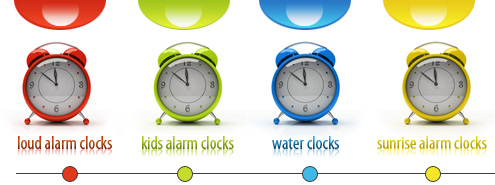Atomic Alarm Clocks
There are as we know many different ways of keeping time. Some of these ways will allow the public – that’s us – the ability to keep on track of our daily activities. There are other clocks which are used for other purposes. One such clock is that of the atomic alarm clocks. These types of clocks are ones which are utilized for lab purposes.
Unlike normal clocks the atomic alarm clocks at present are found in only a few different forms. These forms will include the cesium atomic beam, rubidium gas cell and the hydrogen maser. Of these different clocks you will find that the hydrogen maser clock is considered as being more stable.
The rubidium gas cell is thought of as being the least expensive of the atomic alarm clocks. It is also known to have a good short term stability and it is compact in size. The cesium beam on the other hand is known for its high accuracy. The long term stability that can be achieved with these atomic alarm clocks is well documented.
Since the cesium beam has a high rate of success with accuracy it has become the international definition of the second. What this means is that in applications where very fine accuracy is required in timekeeping you will find a cesium beam being employed.
Besides these types of atomic alarm clocks you will find that there are other ones. These clocks are known as the rubidium masers, thallium atomic beam and ammonia masers. If you look at the history of these atomic alarm clocks you will see that the very first atomic clock was developed in 1949.
This atomic alarm clock was designed and constructed at the National Bureau of Standards. Today you will find that these atomic alarm clocks are being used as quartz oscillators. In this application you will find that high accuracy is not really required. Therefore using one of the above mentioned atomic alarm clocks will work well.
You will find that these atomic alarm clocks are also using in the application of keeping track of the international time scale and in keeping time in the Global Positioning System. The other uses for this type of clock are that of radio astronomy, satellite navigation systems, digital communication systems and electronic communications.
As you see while atomic alarm clocks are ones that you will not see being used by the public they do have important roles to play in our lives. When you see the applications that these atomic alarm clocks are put to, you begin to understand the many uses that time keeping devices – of any sort – can be used for.
